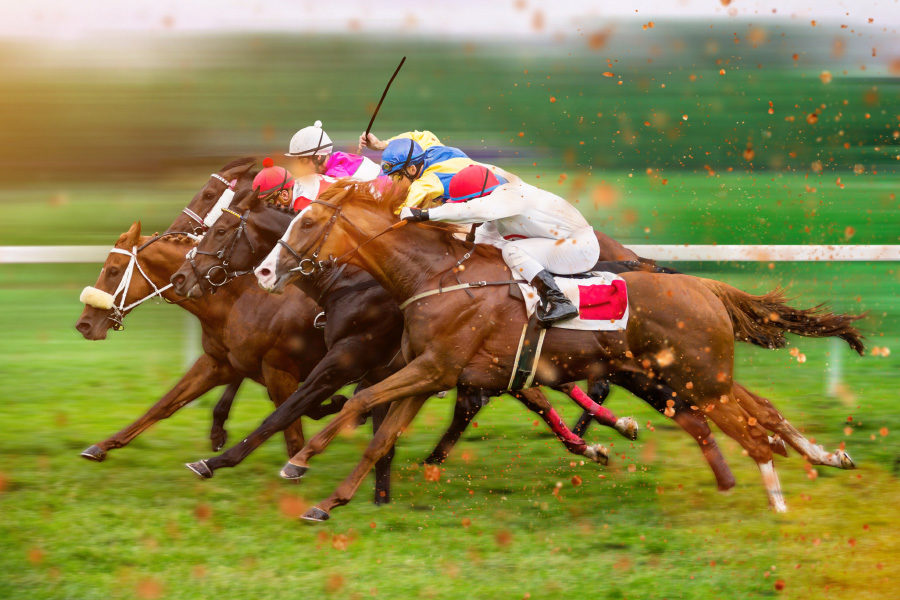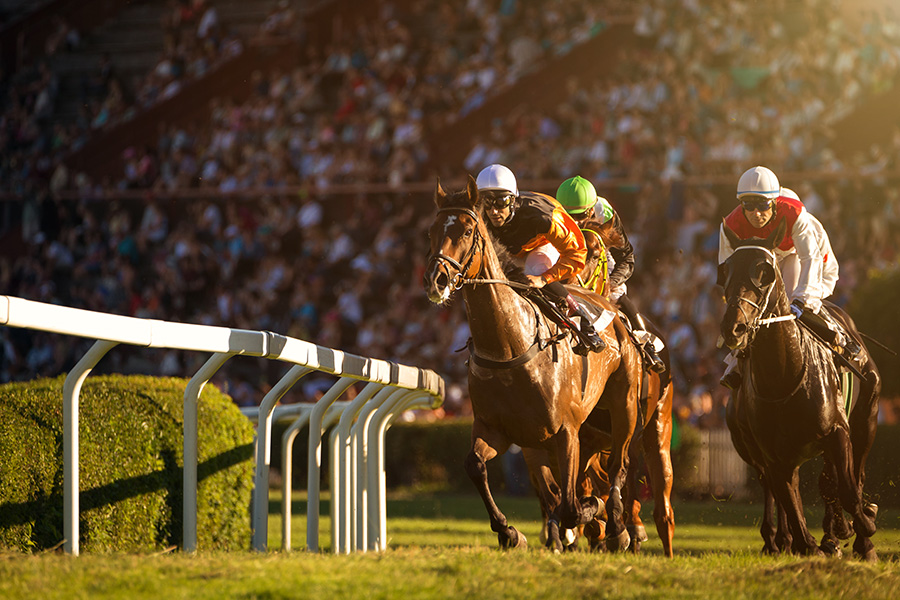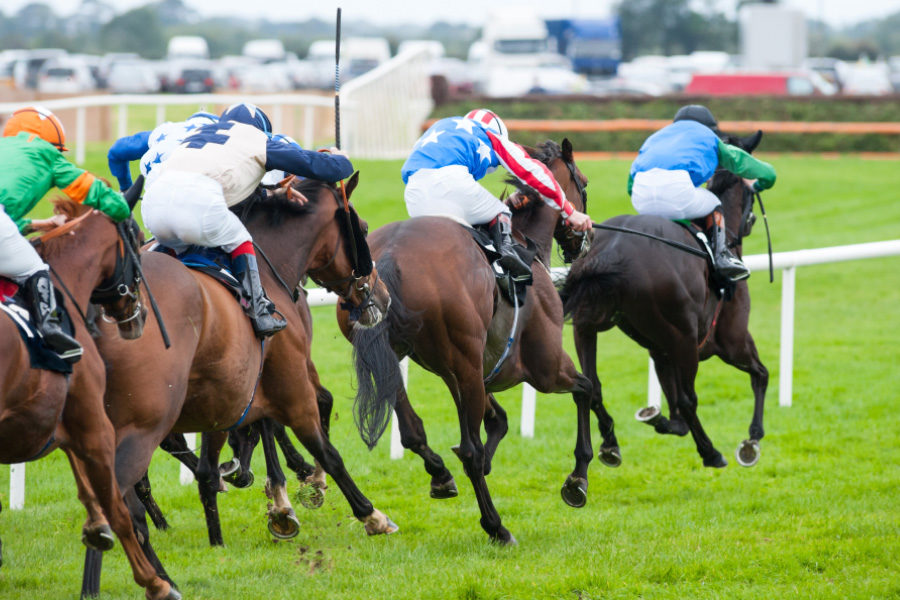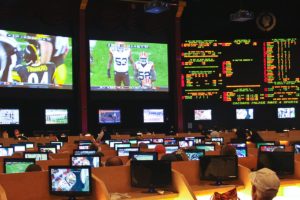How to bet on horse racing: our complete horse racing betting guide

Learn how to bet on horse racing, understand odds and more in our horse racing betting guide.
Always wanted to learn how to bet on horse racing? Then you’re in the right place. Our horse racing betting guide will walk you through the basics, including how to place a bet, how to understand the different types of horse racing bets and how to read horse racing odds. We’ll also offer some tips on making the smartest bet on horse racing.
Betting on horse racing is an age-old tradition. In fact, it’s believed to have started soon after horse racing was established as a sport in Britain during the reign of King James I way back in the early 1600s. Of course, it was a pass time for nobility at first, but over time betting on horse racing became a major tradition in the UK, and then elsewhere. Many of the classics of the British racing calendar, such as the Epsom Derby and 2,000 and 1,000 Guineas Stakes were established in the late 1700s and the early 1800s.
By the early 1900s, having a flutter on the sport of kings had become common entertainment, and it remains so today. To find out how to bet on horse racing yourself, read on for our complete horse racing betting guide.
Horse racing betting guide
The form that horse racing betting takes varies depending on where you are. In many jurisdictions, betting on horse racing is a form of pari-mutuel betting, which means that all the bets of a particular type are pooled, the house take is deducted, and then the remaining pot is then shared among winning bets. In some countries, this is called a totalisator, or tote for a shot.
In the UK, pari-mutuel horse racing betting exists, operated by the UK Tote, but fixed-odds betting is much more widespread. With pari-mutuel betting, you don’t know how much the payout will be at the time you make the bet because it depends on how many other players bet, but with fixed-odds betting, the payout is established when you place your bet, so you know from the outset how much you stand to win if your horse comes in.
Whichever form of horse racing betting exists where you are, let’s look at how to bet on horse racing.
How to bet on horse racing

Betting on horse racing is usually very simple. Where you place your bet will depend on where you are, since in some jurisdictions horse racing bets can only be placed at racecourses themselves, while in others they can be placed via bookmakers on the high street or online.
If you bet in person at a race track or bookmakers, you’ll be given a betting slip. Make sure you keep hold of it so you can either dramatically tear it up if your horse doesn’t win, or, if you’re luckier, triumphantly take it back to the counter to claim your winnings.
To make a bet, you’ll usually need to know the name of the racetrack, the number of the race you want to bet on, which horse you want to bet on, the type of horse racing bet you want to make, and of course how much you want to bet. Always check your ticket before you leave the counter to make sure the details are what you intended – or check carefully online before placing your bet if you’re betting online.
Types of horse racing bets

With betting on horse racing now hugely popular in so many places around the world, from the US to Hong Kong, the types of horse racing bets available, and what they’re called can vary.
In many places, the most common horse racing bets are referred to as “single” or “straight” bets. These are horse racing bets on a single race, for a horse to “win”, “place” or “show”.
With a straight win bet, you’re wagering that your chosen horse will come first, so that’s straightforward enough. In the US and Canada, if you bet on a horse to “to place”, you’re betting that your horse will come first or second, and if you bet on the horse “to show”, you’re betting for it to finish in first top three.
Outside of the US, this works a little differently because the number of payout places often varies depending on how many horses are in the race. For example, in the UK, in a race with seven or fewer horses, only the first two finishers are considered by most bookmakers, so “to show” often doesn’t exist.
Outside of the US, a common type of horse racing bet on a single race is the each-way bet, although again the meaning can vary a little depending on the location. An each-way bet splits your bet in two, with half of it staked on the horse to win, and half of it staked on the horse to place. Those who make an each-way bet will receive a payout if their horse comes first or second/third depending on the placement criteria for the race. Of course, it’s much easier to select a horse that comes in the first three than it is to choose the winner, so the payout will be lower (see below for details of horse racing odds.)
The closest equivalent to an each-way bet in the US is known as “across the board” (covering win, place and show) or a “win/place” bet, but in this case, each portion is treated as a separate bet.
As well as these “straight” wagers, there’s also a range of “exotic” wagers that allow you to combine bets on different horses or races. There are horizontal and vertical exotic bets. Horizontal refers to betting on multiple horses in one particular race, and vertical involves betting on results in different races. Of course, the chances of choosing correctly multiple times are lower, but then the payout can be much higher.
In most places, you’ll have the options of a double: a single bet on the result of two different races (both horses must win to guarantee a payout), and a treble: A single bet on three races.
There are many other kinds of exotic horse racing bets, but their names vary from place to place. Below, we’ll round up some of the types of horse racing bets you may come across in the UK and the US.
Types of horse racing bets in the UK
The main types of more exotic bets in the UK are as follows:
Accumulator: four or more selections. All of them must win to guarantee a return.
Trixie: three doubles and a treble. Two selections have to win for a guaranteed payout.
Patent: three singles, three doubles and one treble.
Yankee: six doubles, four trebles and a fourfold. At least two selections must win to guarantee a return.
Lucky 15: as you can guess, this comprises 15 bets; specifically: four singles, six doubles, four trebles and a fourfold. Only one selection needs to win for a return.
Canadian or Super Yankee: a bet on five selections comprising 26 bets: ten doubles, ten trebles, five fourfolds and a five-fold accumulator.
Heinz: a six-selection bet comprising 57 bets: 15 doubles, 20 trebles, 15 fourfolds, six five-folds and a one sixfold accumulator. Why on earth is it called a Heinz? Because the food brand famously used to advertise “57 varieties” of pickles, of course.
Goliath: want to make an even bigger bet? A goliath comprises 28 doubles, 56 trebles, 70 fourfolds, 56 five-folds, 28 six-folds, eight seven-folds and an eightfold accumulator. How many bets is that in total? A staggering 247. Two selections must win to be sure of any returns.
Alphabet: six selections comprising 26 bets, one for every letter in the alphabet: two patents, one yankee and a sixfold accumulator.
Union Jack: eight trebles from nine selections, laid out like the flag on a 3×3 grid to create three horizontal trebles, three vertical trebles and two diagonal trebles.
Forecast: a straight forecast predicts the order of the horses in first and second place. A reverse forecast predicts the first two finishers, but not in a particular order.
Jackpot: the hardest bet to win in the UK. You need to choose the first six winners at a specific racecourse on a single day for a share of the pool.
Types of horse racing bets in the US and Canada
Exacta, perfecta, or exactor: you choose the horses that finish first and second in the exact order.
Trifecta or triactor: as above but including third place too.
Superfecta: a bet on the first four horses in order.
Hi 5 or Super 5: five horses in the exact order.
Box: a bet on all of the possible permutations of an exacta, trifecta or superfecta. An exacta box with two numbers, often called quinella or quiniela, is a bet on either of two permutations: with each horse to come first or second. A trifecta box with three numbers has six possible permutations
Key: all the possible combinations of a selected “key” horse when combined with other “non-key” horses in a box bet.
Wheel: one horse is selected to finish in a specific position, with all other horses combined to finish in the remaining positions that qualify.
Any2/Duet: a bet on two horses to finish first, second or third but in any order.
Quadrella/Quaddie: here you must choose the winners of four races on the same track.
Pick six or Sweep six: traditionally a bet on the winners of six consecutive races, but there are variations.
Understanding horse racing odds

Understanding the odds will help you make the smartest bet in horse racing. Odds tell you how much of a payout you’ll receive if your bet is successful, and they’re based on bookies’ expectations of the probability that a horse will win based on previous performance and other factors. Generally, horse racing odds are expressed in one of two ways: using the traditional fractional system, or using a decimal system, which is easier to understand.
Fractional odds are usually displayed with a slash and sometimes with a dash, for example, “four-to-one” can be written as 4/1 or 4-1. It might seem complicated, but horse racing odds are merely maths. Sticking with our example of 4/1, it means that if you bet £1 on a horse to win and you get lucky, you’ll win £4, plus your original stake – so you’d get back $5 in total. If the odds are 7/2, this means that for every £2 you bet, you’ll win £7 (plus your original stake).
So “shorter” odds, for example, “2/1”, will give you a lower return. Long odds, for example, “9/1”, means a higher return, but of course, less probability that it will happen.
Fractional horse racing odds expressed the other way round, for example, 1/4 (four-to-one on), are called odds-on and mean that a horse is a favourite to win. In this case, if you bet £4 and the horse wins, you’ll receive just £1 plus your original stake. “Evens” means odds of 1/1 – bet £1 and you can win £1 in addition to getting your stake back.
Although horse racing odds are most traditionally expressed as fractions, many people find decimal odds easier to understand, and they’re becoming more widely used. With decimal odds, you simply need to multiply your stake by the odds given to calculate your winnings – this time including your original stake. So the 4/1 example we looked at above, in decimal odds would be expressed as 5.0. Bet £1 and you’ll get £5 back if your horse wins, £1 of that being your original stake.
Another thing to look out for in horse racing odds is the abbreviation F for favourite, which will have the shortest odds (the lowest returns). You may also see JF, which means joint-favourite.
As for odds on betting each way, bookmakers’ terms vary depending on the type of race. In the UK, for races with three or four runners: bookies will pay one-fifth of the stated odds for horses finishing 1st or 2nd.
Making the smartest bet on horse racing
Our betting guide has looked at the types of horse racing bets available and how to bet, but how do you make the smartest bet in horse racing? Well, the first thing is to do your research. You’ll have a much better chance of making a successful bet if you know the sport of horse racing. For example, what kind of track is the race taking place on? What previous form do the horses and jockeys have?
A horse that consistently comes home in the top three has a strong chance of winning, but remember that every race and track is different. Some tracks are shorter, some have higher jumps, in some races the horses wear blinkers and in others sometimes not. It’s good to know as much as possible.
As a good rule of thumb, it’s worth bearing in mind that the top ten riders in jockey standings win about 90 per cent of races, and favourite horses win around 33 per cent of the time, but of course, these have shorter odds so offer lower returns. Likewise, place bets and either-way bets have a better chance of gaining you a return, but the return will be lower.
Betting on multiple races can increase your chances of picking a winner in one of them, but of course, whenever you bet, think about it carefully and manage your bankroll responsibly to make sure you can afford what you stake











